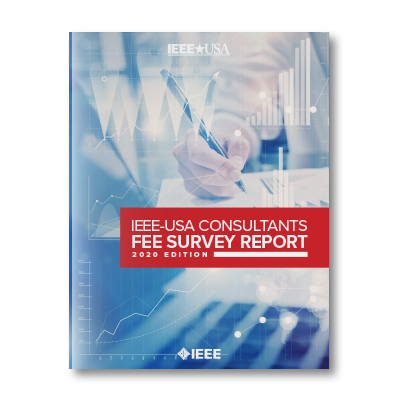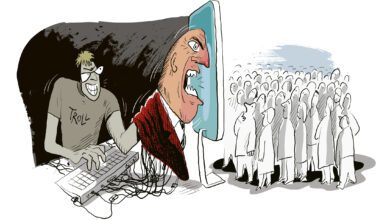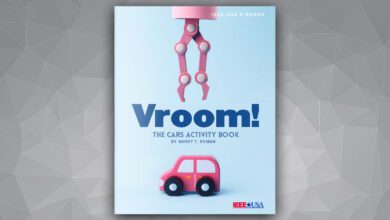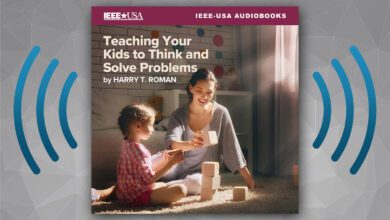
Can it be that more mid- to late-career engineers are becoming consultants? According to the 2020 IEEE-USA Consultants Fee Survey Report, the average (mean) age of consultants has declined to 57.9 years — from 61 years of age in the 2018 and 2019 reports.
This report attributes the 3.3-year age decline to two factors: first, a 7.9% increase in survey respondents ages 55-59, and second, a 20.9% decrease in respondents over age 65. Consultants had a mean of 24 years of professional experience, slightly below the mean of 26.4 years in 2019.
On average, male consultants in the survey had more professional experience than female consultants; but the gender gap between them decreased seven years from 2019 — from 10 to three. The mean years of women’s experience was 21.4 years (up from 17.3); for men, it was 24.3 years (down from 27.2). The report ascribes the shrinking professional experience gap to the growth in women’s average years of professional experience and a decline in men’s.
Elsewhere in the report, it is noted that as with IEEE general membership, the vast majority is male (92.2%), and identifies as non-Hispanic white (73.5%). The largest minority group among consultants remains Asian or Pacific Islander, with 5.7%, although another 6.3% preferred not to answer the question about ethnicity.
Conducted over a four-week period starting in mid-June 2020, the Survey drew only 11.5% of respondents over the age of 70 — less than half the 25.1% who reported being in this age category last year. Another 35.9% reported being ages 60-69; the 45-59 age range drew 41%.
Nearly 83% (82.8%) are U.S. citizens by birth. Another 12% are naturalized citizens. Consistent with 2019, 3.4% are permanent resident aliens.
The median hourly rate charged this year by consultants is $150; a $10 decrease from last year, and the same as in 2018. Consistent with previous reports the past few years, the 2020 findings show some flattening across experience levels. Consultants who have been in their professions for fewer than 15 years report this $150 median hourly rate. Those with 25-34 years of experience report $163, the highest median hourly rate.
When the data includes the number of years as a consultant, rather than in the profession, there’s slightly more variation. The typical rate begins at $135 an hour for those with less than five years of consulting experience. The rate increases to $175 an hour, for those with 20-24 years’ experience. The highest deciles show lower rates ($360/hour) than the highest seen in previous reports ($400/hour).
Education levels are an important factor in what consultants charge. Those with a Ph.D. or an MBA have a $43 advantage in their median hourly rate, over those with Bachelor’s or Master’s degrees.
Some 25% of this year’s respondents (down from 32.4% in 2019) have a Professional Engineer’s (P.E.) license, giving them a $10 hourly advantage. This hourly increase is consistent with last year, but down somewhat — compared to a $22 hourly advantage in 2018, over those without a license.
To understand respondents’ areas of expertise, the survey asked them to select all the technical specialties — of 96 listed — in which they offer consulting services. The top five growth areas since 2016 were: Systems Engineering (35.2%); Project Management (32.9%); Electrical Power Systems (26.5%); Software Development, Application & Management (25.2%) and Management (24.5%). The five areas with the greatest increases since 2016 include: Python (+9.6%); Information Technology (+6.4%); Electro-Mechanical (+4.8%); C/C++ (+4.2%); and Automation (+3.6%).
The five areas with the greatest losses since 2016 were: Hardware, General (-3.7%); Antenna (-3.7%); Microwave (-4.4%); Illumination/Lighting (-5.2%) and Networks — LAN/WAN — Other (-5.8%).
As with the last three survey reports, three out of four consultants (75.3%) worked out of their home office. (Reminder: The 2020 Survey comprises consultant fees and related information for 2019, before the COVID-10 pandemic.) About four in 10 (42.7%) carry professional liability insurance, in case of errors or omissions.
Respondents who worked solely as independent consultants in 2019 continue to decline. After peaking at 48.6% in 2018, sole independent consultants dipped slightly to 44.3% in 2019, and dropped to 37.5% this year. More than four in 10 (43.8%) spent their consulting hours with partners as a contract employee; as an employee of another company (not their own); or incorporated.
Most of the average consultant’s business continues to comes from repeat clients — 62.3% in 2019. But having connections is vital, as earnings also come from referrals by clients and friends (14.1%). Client contacts made by networking accounts for another 10.1%. The Survey introduced several new categories, but respondents barely used them; they include social media networking (1.4%) and Internet Ad/Google Ad (0.7%)
The majority of consultants (59.4%) work with private, non-defense and non-utilities companies. When defense and utilities-related firms are added in, the private industry share rises to more than eight in 10 respondents.
Reflecting U.S. IEEE members as a whole, respondents to this survey worked in a variety of business lines — before becoming consultants. Electrical/Electronics Manufacturing (13.%) is the most common. Communications and Consulting (both at 10.2%) are next, rounding out the top three lines of business.
When looking at which parts of the United States offer the highest rates of compensation, the Middle Atlantic Region (New Jersey, New York, Pennsylvania) had the highest average hourly rate — $175, down from $195 in 2019. The East North Central Region (Wisconsin, Michigan, Illinois, Indiana, Ohio) and the New England Region (New Hampshire, Vermont, Massachusetts, Rhode Island, Connecticut) both reported an average hourly rate of $143, which is $7 below the overall median hourly rate of $150. The IEEE-USA Consultants Fee Survey analyzes responses using United States Census Bureau Regions, not IEEE Region designations.
Finally, because the survey was conducted several months after the COVID-19 pandemic had begun, questions were included about how the crisis was affecting consultants. One-third (34%) said the pandemic was negatively affecting their business; 30% said it was having both negative and positive effects. Slightly fewer than three in 10 (28%) reported it was having no effect; and seven percent said it was having a positive effect.
When respondents were asked for examples of the positive effects of the pandemic on their business, it wasn’t surprising that the ability to work from home more was cited overwhelmingly. Negative effects included travel restrictions that limit productivity and difficulty in connecting or communicating with clients.
IEEE-USA has conducted surveys about the compensation and fringe benefits of its members since 1972. A separate consultants’ fee survey began in 1998. This past June, 9,938 IEEE members, identified as consultants in the IEEE membership database, were emailed an invitation to complete the 2020 Consultants Fee Survey. Some 956 respondents participated in the survey, a 9.6% response rate. All findings in this report represent only those who were identified as self-employed consultants, defined as the 600 who indicated that at least half of their consulting hours, from their personally earned income in 2019, came from fee-based consulting. IEEE Strategic Research conducted the survey and prepared the report.
The 2020 IEEE-USA Consultants Fee Survey Report is available for purchase from the IEEE-USA Shop. Non-member price is $49.95; member price is $29.95.
Helen Horwitz is an award-winning freelance writer who lives in Albuquerque. She was with IEEE from 1991 through 2011, the first nine as Staff Director, IEEE Corporate Communications.







